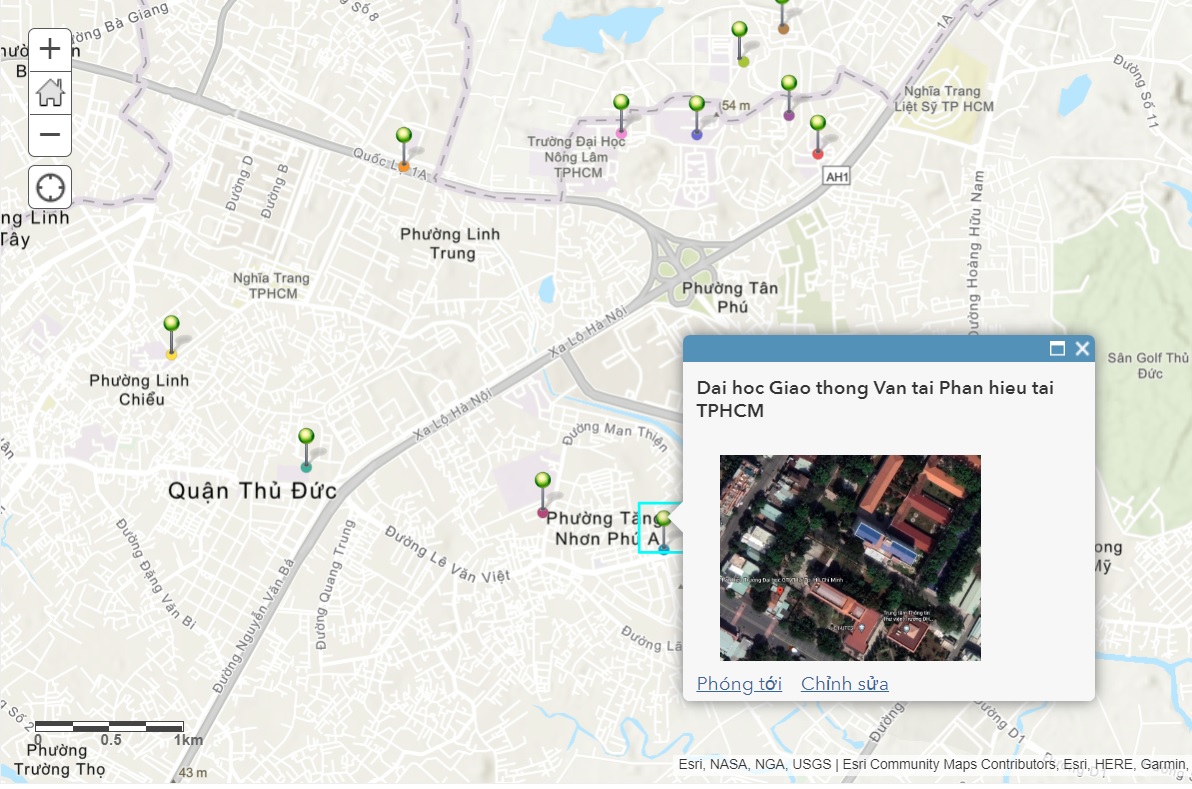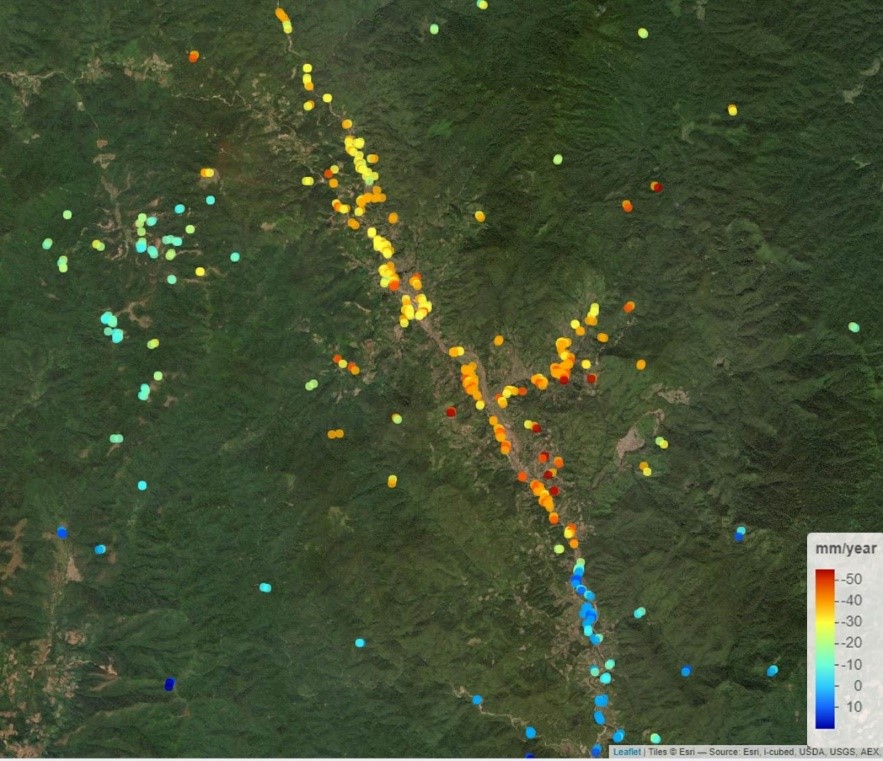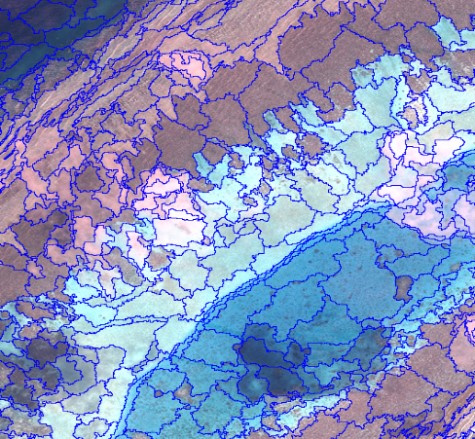13. NGHIÊN CỨU PHÁT TRIỂN HỆ THỐNG GIÁM SÁT ĐỘ ĐỤC CỦA NƯỚC SỬ DỤNG INTERNET VẠN VẬT (IoT) BỔ SUNG CHO DỮ LIỆU ẢNH VIỄN THÁM
Giới thiệu
Ô nhiễm nguồn nước đang là vấn đề được quan tâm trong thời gian gần đây. Ngày nay, dữ liệu viễn thám đang được sử dụng để giám sát nguồn nước trên diện rộng. Tuy nhiên, dữ liệu viễn thám bị ảnh hưởng lớn bởi độ phân giải không gian, thời gian quan sát của vệ tinh và các yếu tố khí quyển khác. Độ chính xác của dữ liệu viễn thám quyết định chất lượng quá trình quan trắc môi trường vì thế ứng dụng viễn thám kết hợp công nghệ cao để thực hiện việc giám sát chất lượng nước đang là xu thế nghiên cứu hiện nay. Nghiên cứu này tập trung vào giải pháp xây dựng hệ thống giám sát ô nhiễm nước mặt sử dụng cảm biến hiện đại kết hợp công nghệ Internet vạn vật (IoT) nhằm bổ sung nguồn dữ liệu tăng nhằm cường độ chính xác cho các dữ liệu viễn thám. Kết quả của nghiên cứu là một bộ mô hình thử nghiệm hệ thống cảm biến chất lượng nước mặt sử dụng công nghệ IoT. Bước đầu, nghiên cứu này tập trung xây dựng bộ thiết bị có khả năng giám sát liên tục hai chỉ số độ đục và nhiệt độ của nước. Các dữ liệu đo được sẽ được gửi tới máy chủ phục vụ cho việc nghiên cứu đánh giá chất lượng nguồn nước. Kết quả thử nghiệm thiết bị đã chế tạo sẽ được so sánh với kết quả quan trắc môi trường nước trong phòng thí nghiệm nhằm đánh chất lượng bộ thiết bị đã được phát triển.
Toàn văn bài báo
Trích dẫn
[2]. Zhang, Y; Wu, Z; Liu, M; He, J; Shi, K; Wang, M; Yu, Z (2014). Thermal structure and response to long-term climatic changes in Lake Qiandaohu, a deep subtropical reservoir in China. Limnol. Oceanogr. 59, 1193 - 1202.
[3]. Govender, M; Chetty, K; Bulcock, H (2007). A review of hyperspectral remote sensing and its application in vegetation and water resource studies. Water Sa, 33, 145 - 151.
[4]. He, W; Chen, S; Liu, X; Chen, J (2008). Water quality monitoring in a slightly-polluted inland water body through remote sensing - case study of the Guanting reservoir in Beijing, China. Frontiers of Environmental Science & Engineering, 2, 163 - 171.
[5]. Hossen, H; Negm, A (2016). Change detection in the water bodies of Burullus lake, Northern Nile delta, Egypt, using RS/GIS. Procedia Engineering, 154, 951 - 958.
[6]. Duan, H; Cao, Z; Shen, M; Liu, D; Xiao, Q (2019). Detection of illicit sand mining and the associated environmental effects in China’s fourth largest freshwater lake using daytime and nighttime satellite images. Sci. Total Environ. 647, 606 - 618.
[7]. Liu, T; D. Kuang and O. Yin (2004). Study on hyperspectral quantitative model of concentrations for Chlorophyll a of Alga and suspended particles in Tailake. Journal infrared millimeter and waves 23 (1): 11 - 15. doi:10.3321/j.issn:1001-9014.2004.01.003.
[8]. Shi, K; Zhang, Y; Zhu, G; Liu, X; Zhou, Y; Xu, H; Qin, B; Liu, G; Li, Y (2015). Long-term remote monitoring of total suspended matter concentration in Lake Taihu using 250 m MODIS - Aqua data. Remote Sens. Environ. 164, 43 - 56.
[9]. Chen, S; Fang, L; Li, H; Chen, W; Huang, W (2011). Evaluation of a three-band model for estimating chlorophyll-a concentration in tidal reaches of the Pearl river estuary, China. ISPRS J. Photogramm. Remote Sens. 66, 356 - 364.
[10]. Moran, M. S; Inoue, Y; Barnes, E. M (1997). Opportunities and limitations for image-based remote sensing in precision crop management. Remote Sens. Environ. 61, 319 - 346. https://doi.org/10.1016/S0034-4257(97)00045-X.
[11]. Dlamini, S; Nhapi, I; Gumindoga, W; Nhiwatiwa, T; Dube, T (2016). Assessing the feasibility of integrating remote sensing and in-situ measurements in monitoring water
quality status of Lake Chivero, Zimbabwe. Phys. Chem. Earth 93, 2 - 11. https://doi.
org/10.1016/j.pce.2016.04.004.
[12]. McClelland, C (2019). What Is IoT? A simple explanation of the Internet of Things. Available online: https://www.iotforall.com/what is-iot-simple-explanation/ (accessed on 13 May 2019).
[13]. Diène, B; Rodrigues, J. J. P. C; Diallo, O; Ndoye, E. H. M; Korotaev, V.V (2020). Data management techniques for Internet of Things. Mech. Syst. Signal Process. 138, 106564.
[14]. McClelland, C (2016). IoT Explained - How does an IoT system actually work? Available online: https://www.leverege.com/blogpost/iot-explained-how-does-an-iot-system actually-work (accessed on 29 October 2016).
[15]. Li, C.-Z.-E; Deng, Z. W (2020). The embedded modules solution of household Internet of Things system and the future development. Procedia Comput. Sci. 166, 350 - 356.
[16]. Dachyar, M; Zagloel, T; Saragih, L (2020). Knowledge growth and development: Internet of Things (IoT) research, 2006 - 2018. Heliyon, 5, e02264.
[17]. Zhu, X; Li, D; He, D; Wang, J; Ma, D; Li, F (2010). A remote wireless system for water quality online monitoring in intensive fish culture computer. Electron. Agric. 715, 53 - 59.
[18]. Francisco, J; Epinosa, F; Guillermo, E; Rendon, R (2012). A ZigBee wireless sensor network for monitoring an aquaculture recirculating system. Appl. Res. Technol. 10, 380 - 387.
[19]. Huang, J; Wang, W; Jiang, S; Sun, D; Ou, G; Lu, K (2013). Development and test of aquacultural water quality monitoring system based on wireless sensor network. Trans. Chin. Soc. Agric. Eng. (Trans. CSAE) 29,183 - 190.
[20]. Nguyễn Văn Thảo, Vũ Duy Vĩnh, Nguyễn Đắc Vệ, Phạm Xuân Cảnh (2016). Xây dựng thuật toán xử lý dữ liệu viễn thám xác định hàm lượng vật chất lơ lửng tại vùng biển ven bờ châu thổ sông Hồng. Tạp chí Khoa học và Công nghệ biển; Tập 16, Số 2, tr. 129 - 135.
[21]. Nguyễn Thanh Hùng, Nguyễn Thành Luân, Vũ Đình Cương, Đặng Hoàng Thanh, Vũ Hữu Long, Nguyễn Vũ Giang (2017). Nghiên cứu ứng dụng ảnh viễn thám xác định nồng độ bùn cát lơ lửng vùng cửa Hới sông Mã. Tạp chí Khoa học và Công nghệ Thủy lợi, số 37.





